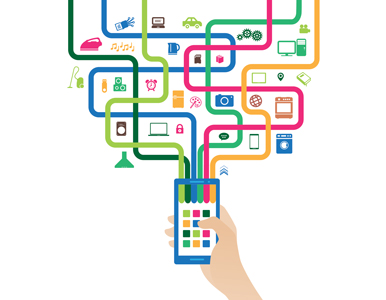
It wasn’t long ago that the whir and screech of a dial-up connection and a familiar, staticky greeting —“You’ve got mail”— were the only two indications of a successful internet connection.
In those days, the screen was the sole arbiter of when we were and weren’t online—the one access point that could merge us onto the information superhighway. And it carried a few risks we’ve come to know: viruses, email hacks, denial of service attacks that temporarily disable websites, and government surveillance.
But the greatest dangers of the internet, Professor Laura DeNardis explains, are the ones we cannot see.
The rise in the number of everyday devices—everything from doorbells to weather sensors to FitBits—connected to the web, or what DeNardis and other researchers call the “internet of things” (IOT), has expanded our ability to communicate and automate. Each new window of connectivity, however, has the potential to be broken into by a virtual burglar.
“It certainly changes the nature of cybersecurity because an outage is no longer just about an inability to access a bank account or access a website, which is serious enough,” says DeNardis, faculty director of AU’s Internet Governance Lab and a leading expert on internet governance. “It’s about sabotaging the brakes of a car. It’s about, as recently happened, hacking into a device and making someone’s home temperature go up to 100 degrees. These are now consumer safety issues and huge national security issues.”
DeNardis has spent the last four years exploring cyber policy for her sixth book, The Internet in Everything, due out later this year. She found the IOT, like most topics she researches, walks a human rights tightrope of safety and privacy. A network without screens is one in which consent to data collection and distribution becomes more complicated. How can one click “accept” on an invisible terms and conditions agreement?
“You can be [completely unaware] that you’re being picked up by the IOT devices of a friend’s home when you go over to watch the Super Bowl,” DeNardis says.
Just as frightening is how much is outside of our control. A key example DeNardis explores in her book is the 2016 Mirai botnet denial of service attack, in which malware capitalized on vulnerabilities in millions of IOT devices to light the fuse for one of the biggest outages in the history of the internet.
Lax security in the IOT is difficult to pinpoint, let alone combat. But DeNardis has spent her career deciphering acronyms and algorithms for colleagues, collegians, and citizens. AU’s 2018 Scholar-Teacher of the Year makes the material accessible to students by giving them an early introduction to the technology—explaining how images, videos, and the word “hello” translate into zeroes and ones—and demonstrating how cyber policy impacts their lives.
One example she uses to break down the IOT into simpler terms is China’s stringent and pervasive system of surveillance that’s increasingly tied to social scoring—a phenomenon many learned about for the first time in a particularly creepy episode of Netflix’s Black Mirror.
“There is cultural awareness,” DeNardis says. “But it’s not science fiction. It’s right now.”